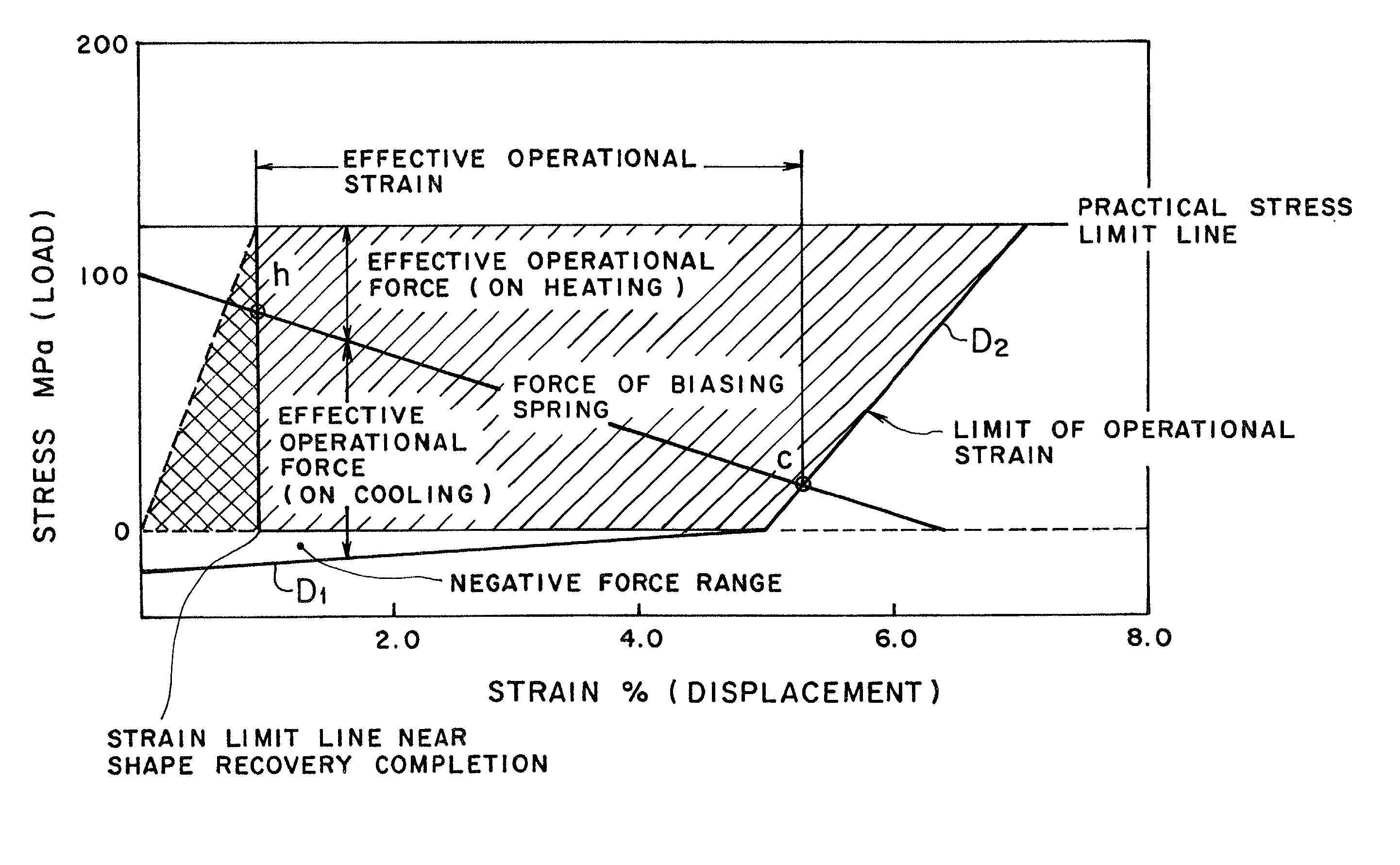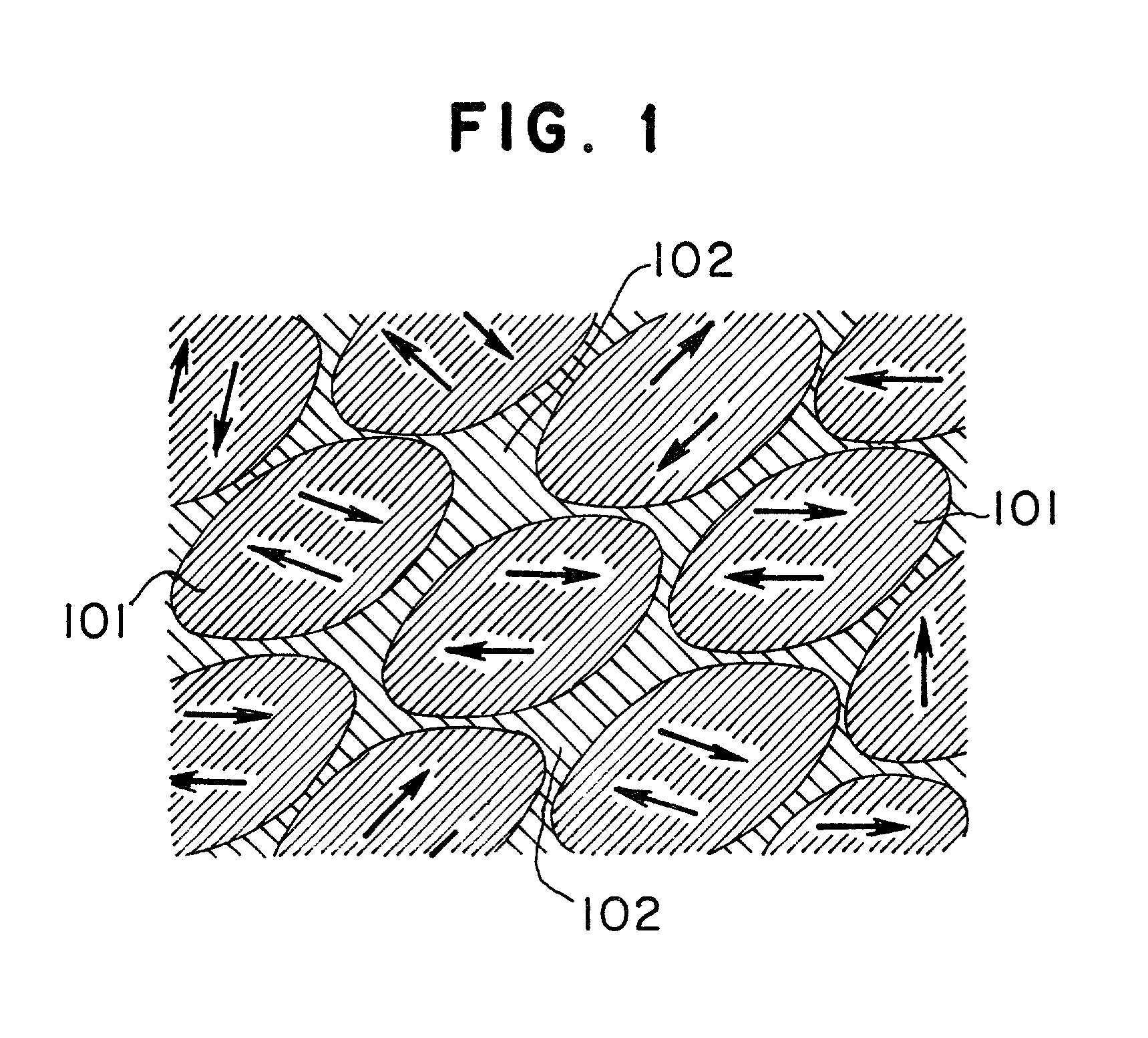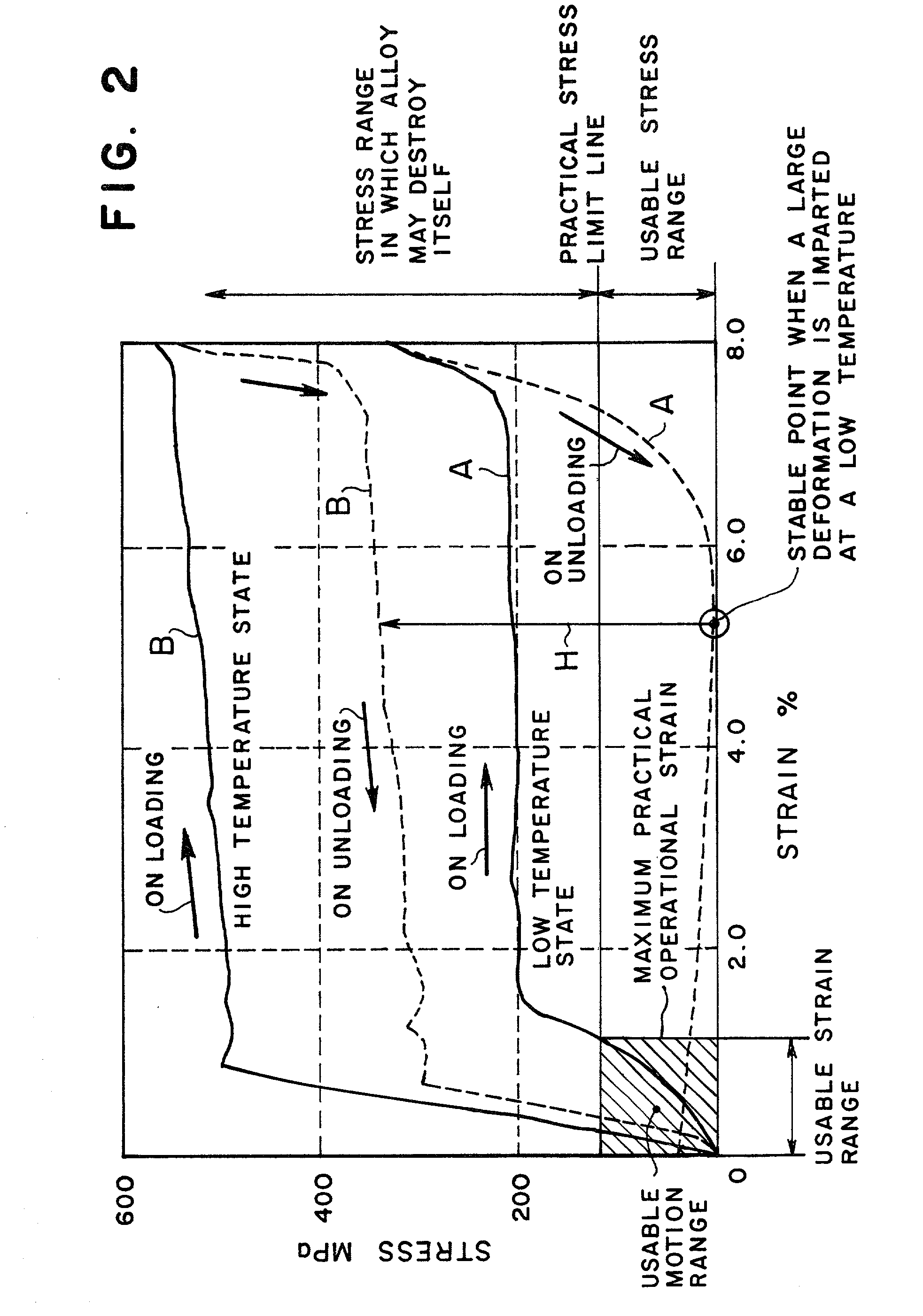Generally, in conventional shape memory alloy actuators, their shape memory alloys tends to lose the memory of the given configuration, and permanent strains tend to be produced in the alloy in a short period of time.
Therefore, the conventional shape memory alloy actuators have short lives and unstable performances, and their shape memory alloys are unstable in configuration.
Besides, they utilize only a very limited range of recoverable strains of the shape memory alloys and thereby their operating ranges are limited.
However, since orientations and sizes of its crystals are random and thereby some parts in the interior of the alloy material cannot follow the
large deformation, large shape
recovery can be repeated to some extent as long as no load stress is applied thereto, but in the case where large shape recovery is repeated under loaded condition, a permanent deformation such as droop and elongation occurs easily and sufficient restoration to the original shape can hardly be attained.
Such properties of shape memory alloys, though not known widely, are the biggest cause to make practical applications of shape memory alloy actuators difficult; erroneous mechanism designs cannot attain durable shape memory alloy actuators.
For instance, when a commonly used shape memory alloy is heated while being constrained with a pre-deformation of
tensile strain that exceeds 1%, the shape
restoring force generated therein exceeds the fatigue strength and the elastic limit thereof and is large enough to worsen their own properties.
For applications where the shape memory alloy is operated repeatedly, it seems that, even with a strain less than above, depending on the manner of heating the alloy, a strong shape
restoring force of the alloy may destroy the structure locally in the interior of the alloy material, and this becomes a big factor to make the alloy unstable in shape and properties.
Though, as was stated previously, the shape stability for a large external force of the shape memory alloy can be improved to some extent by
work hardening the alloy, it sacrifices most parts of the alloy that are capable of exhibiting the shape
memory effect, and consequently a large operational strain cannot be available.
However, the
crystal grain boundaries 102 have structural inconsistencies and defects since they bond adjacent crystals having different orientations of deformation, and it is considered that they do not have properties like those of superelastic materials, unlike the
crystal grains, but have properties similar to those of ordinary materials, though they are similar to the
crystal grains in composition.
Besides, in the neighborhood of the completion point of shape recovery, even when the shape memory alloy is subjected to a comparatively small stress, most of the crystals are in a state where they have completed shape recovery to the fullest extent, and accordingly there is a possibility that the crystal grain boundaries are subjected to a large force and broken partly.
Though such slight internal structure destructions that are produced mainly at the crystal grain boundaries in the full shape recovery state are inconspicuous while the operation cycle number is small, they cause serious problems when a long service life of 100,000 or more operation cycles is required of a shape memory alloy
actuator.
However, in the case of shape memory alloy actuators of the type in which their shape memory alloys are driven by an
electric current passed therethrough, such problems become very serious, because their shape memory alloys are prone to be overheated frequently, and the actuators, as commercial products, compete with motors and solenoids and accordingly a long service life and a large operational strain are required of the actuators.
According to literature, etc., it has been thought that, generally the two-way shape
memory effect is a phenomenon observed only within the range in which a strain .epsilon. is 1% or less in
tensile strain equivalent and it is difficult to put it to practical use since it is unstable.
In fact, hitherto devices utilizing the two-way shape memory effect for practical purposes have been hardly found.
For example, if an extension
coil spring is formed of a shape memory alloy that exhibits a perfect two-way shape memory effect, the extension
coil spring would be hard to deal with as a product since it is expanded to its full length in its
stable state at low temperatures.
The bonds between the neighboring atoms of the shape memory alloy are like links having joints, and the alloy is deformed with a small force at first, but since the range in which the atoms can move easily is limited, further deformation does not occur without destruction of the links.
This is considered to be the reason why they treat a shape memory alloy just like a spring made of an ordinary material, resulting in deteriorated performance and shortened service life of the alloy, without their knowing.
In the case of the conventional shape memory alloy, the shape restoring force and the biasing force cannot be fully utilized.
These characteristics of a shape memory alloy are the principal reason why the design of a shape memory alloy actuator is difficult; an erroneous mechanism design cannot attain a durable actuator.
This situation not only prevents the actuator from performing movement properly but also tends to cause the deterioration of the shape memory alloys as stated previously, which makes it difficult to put the actuator into practical use.
Accordingly, it is difficult to fabricate an actuator that stably repeats a
reciprocating motion by using a range of large deformations exceeding the practical
stress limit line.
As compared with the range in which the material itself can recover the configuration, the operational strain and the load stress actually available without causing the
instability and shortening of the service life are very limited.
First, a limit is placed on the stress, since the two-way shape memory alloy is damaged, if it is heated while being restrained, as is the case with the conventional shape memory alloy.
 Login to View More
Login to View More 


